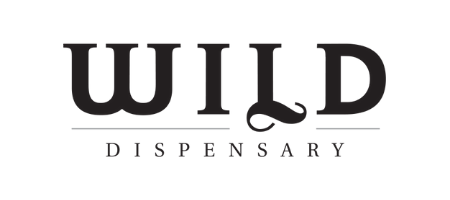Wild foraging has gained popularity in recent years. Wild foraged ingredients are often highlighted in menus at restaurants, within products or ranges (like ours) but to be honest wild foraging is something our ancestors and communities have done for years. Foraging basically means being able to safely identify, pick and utilise edible wild plants to either make meals or medicine with. Looking for wild food that grows around you is not only fun and free, it’s easy! Here’s where to start.
Why Wild Foraging Is Important To Us
Given that we live in such an abundant area of wild plants we are lucky to be able to utilise this abundance for some of our products. We choose to wild forage as we believe that the plants around us, support us. Often they are in season just when we need them:
- We harvest wild thyme from Central Otago in the summer. Anyone that has visited Central Otago will know it gets the hottest summers and the coldest winters and this massive variety of temperature and climate makes the thyme that grows there incredibly strong and the active constituent within it (thymol) super potent and effective. This is why we use thyme in our Chest Tonic, Vira Elixir and Throat Spray
- Elderberries are usually ready in March which is the start of Autumn and the cooler months - We use these in our Immunity Tonic and Switchel
🌿Related: 7 Easy Ways To Naturally Boost Your Immune System
- Rosehips are ready after the first frost (which usually indicates the start of needing to add in some vitamin C into your diet) - We use rosehips in our Daily Boost and Fire Cider
🌿Related: The Health Benefits Of Rosehip: Our New Daily Boost Tonic
- St John’s wort in Summer to help with sun/wind burn, itchy bites, skin irritations and sore muscles from physical activity - We use this in our Golden Skin Oil and Mood Tonic
🌿Related: A Naturopath's Top 10 Tips For Taking St. John’s Wort

Wild foraging can mean making the most of the free apples that might grow roadside and using them to make stewed apples for winter or collecting seafood from local beaches (always being mindful of limits and sizes of allowed catches). Being able to supplement your household with free and delicious wild foraged food is an amazing way of connecting with your surroundings and passing on a valuable skill to your family members.

How To Start Wild Foraging
1. Go To Your Community Garden
Most places in New Zealand have local community gardens. If you can, visit yours and see what they are growing and offering. Many local gardens have excess produce or seeds and are often incredibly happy to pass on any knowledge to community members. Otago Polytechnic has a community garden for students that incorporates not only vegetables and fruit, but herbs as well. This is a great way to get into wild foraging and connect with your community!

2. Read Books About Wild Foraging
There are some great books on foraging and utilising more ‘free’ foods around. Your local library will have a varied collection from around the world and more locally within Aotearoa. Johanna Knox has written a great book called "The Foragers Treasury" that has been reprinted with colour photographs to make identification much easier. She also spoke on RNZ about wild foraging!
Did you know many local libraries have seed swaps, plants or information on local foraging? They are a wealth of knowledge on all things local and they also run workshops or have specific books you might be interested in. They are also really open to buying in books that you might have found online or that interest you - which is a great service!
3. Have A Look In Your Backyard
If you want to start wild foraging, the easiest place to start is your very own backyard. What you find might surprise you! Plants that you think are weeds might actually have not only a nutritional, but medicinal value as well. Common plants that you see around are:
Chickweed - amazingly rich in nutrients. It grows low to the ground, the green plant is often intertwined with tiny star like white flowers (the Latin name is Stellaria media which comes from the fact that the tiny white flowers resemble stars). You can use it in pestos, green sauces or in skin care as it is really helpful for irritated skin.
Culinary plants like parsley, mint, sage, dill and fennel are easy to grow and can be used to bulk out meals like soups, broths, sausage rolls or salads.
Nettle - another great mineral rich plant. Nettle is great for helping with plant based iron and minerals due to its long roots that reach deep into the soil. Nettle can be used in teas, cooking (crackers/fritters etc) and also in skin care to support healthy skin. There is a native nettle here in NZ that should not be picked as it is dangerous so make sure you identify the right plant.
Cleavers which are predominantly around in spring are great to support the body’s natural detoxification pathways as well as supporting clearer skin.
Calendula flowers are great to add to salads and baking for extra colour. You can make a fresh tea from the petals or add into a vinegar to help support your digestive and skin systems.
🌿Related: The 3 Ingredients In Liver Bitters That Will Help You Feel Amazing

4. Look At Our Range
We love wild foraging. It gives us a chance to get outside and be in nature and it links us with the seasons. Every single one of our products has a wild element. That cnnection with nature, and the value it holds is so important that we wanted a piece of it in every bottle. Wild harvesting offers not only premium and potent traditional plant medicine- but also a connection to nature for us and you- our customers.
We are truly passionate about providing natural medicine right from our very own backyard. In light of what has happened recently in the disruption in supply chains we are very lucky that the plants we use are around us, literally.
Our wild foraged plants:
We are able to wild forage so many amazing plants to use in our range, as well as New Zealand natives (like horopito) and the great thing is that once you know what you are looking for you too can utilise what grows around you.
We love sharing our knowledge as it is our job to pass on information to our community to help support wellness. We often run workshops (so keep an eye on our Facebook page), and regularly post blogs and we are always keen to chat plants so get in touch if you want to know more. But also have a look around at local events, sometimes there are talks through the museum or local gardening groups - the amount of knowledge locals have is priceless!
5 Join A Facebook Community
The internet is a wonderful place and it’s perfect for connecting with other fellow wild foragers. Just search ‘foraging’ and the region in which you live in the Facebook search bar and you’ll find a little community of your own. Here you can ask questions of your local foragers or get help with plant identification.
Please do be aware however that their advice never offers complete certainty, so always do your own research and never eat anything you’re not 100% sure about. It’s also important to beware of invasive species. Banana passionfruit, for example, is an edible wild fruit but it is a pest and proper handling is required to ensure you don’t spread it. Government websites provide great information if you’re ever concerned about a plant and want to learn more.








